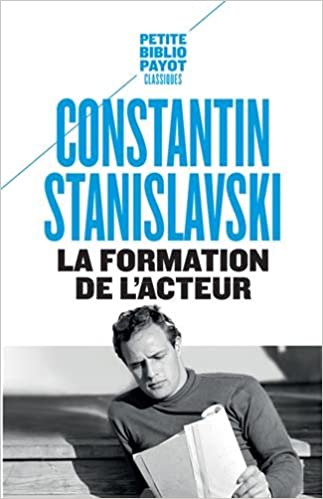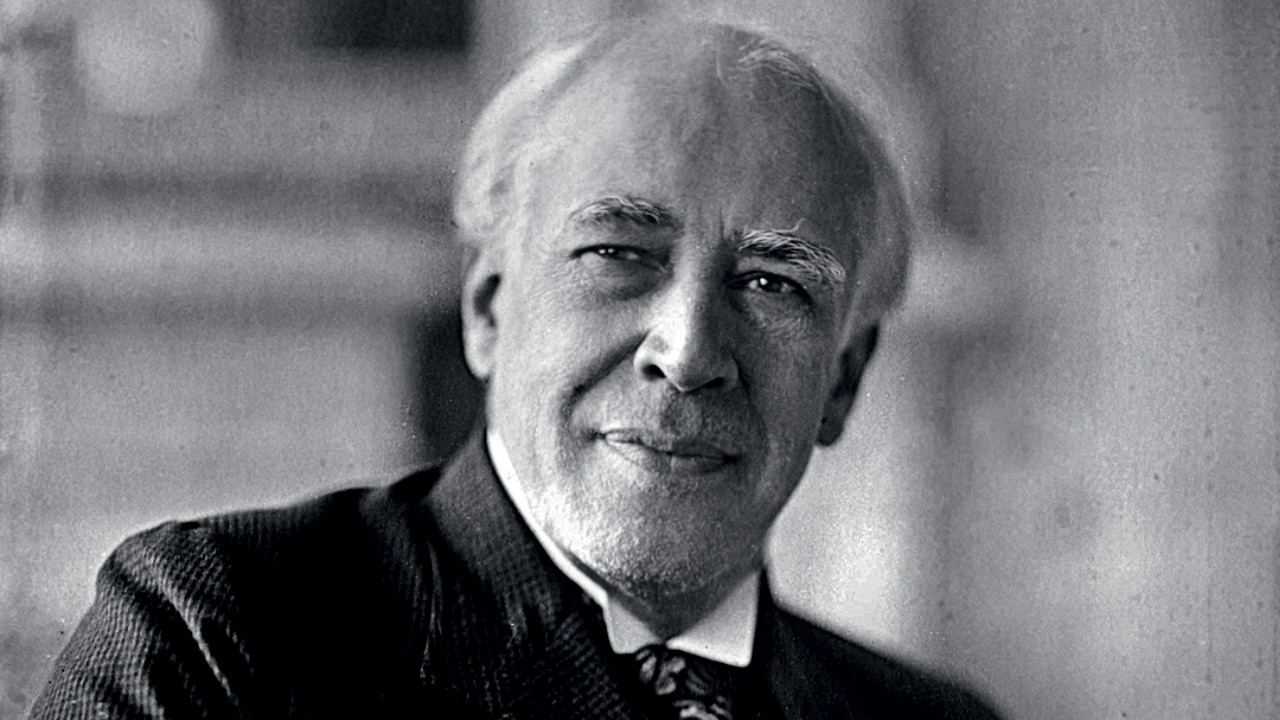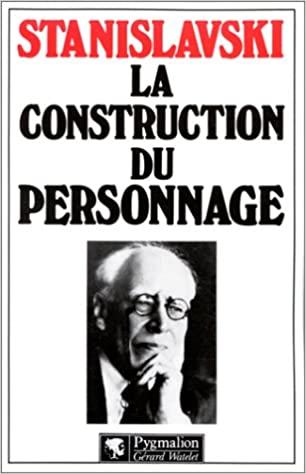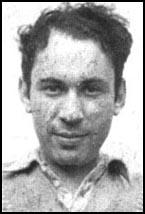THE ORIGINS OF THE METHOD
History of Acting
STANISLAVSKI AND THE MOSCOW ART THEATER
His very modern approach to acting, with truth as its primary goal, has profoundly revolutionized the art of drama as we know it today.



"Because the best thing that can happen to an actor is to be completely taken by his role. Involuntarily, he then starts to live his character, without even knowing what he feels, without thinking about what he is doing, guided by his intuition and his subconscious, and everything happens automatically."
Americans are fascinated by the performances they attend: for the first time, a real show is taking place in front of their eyes, far from the usual mechanical or overplayed representations.
THE MISTAKES OF THE AMERICAN LABORATORY THEATRE
Among their students: Lee Strasberg, Stella Adler and Sanford Meisner.
Reduced to the "psychological" part of his work, he was far from the complete approach of his system - starting both "from the inside" and "from the outside" - on which he will work, without completing it, until the end of his life.
Problems of translation rights from Russian to English will not allow either, and this until recently, to rectify many errors of import of Stanislavski's system in the West.

"Stella Adler had been worried for 3 years about certain aspects of the Stanislavski system or method. She admitted that she no longer found any joy in acting. Perhaps it was due to this damned method. Stanislavski immediately said, "If the system doesn't help you, forget it. But maybe you are not using it correctly. He offered to work with her on a scene she had found difficult."




1930'S: THE GROUP THEATRE
From this group of people who had always called themselves "our group", American playing techniques were born.
As well as a vision of the actor's role in relation to the political and social issues of his time.
Through the common practice of acting and its application to many professional projects and performances, tensions will emerge in the group, as well as questioning the foundations of the acting techniques themselves.
"The biggest struggle, however, was within the Group itself. The relationship between Strasberg and me became increasingly strained. (... I found him ... reluctant to admit his artistic problems or shortcomings, so much so that it was difficult to even suggest them.

LEE STRASBERG OR THE RAVAGES OF EMOTIONAL MEMORY
One man, in particular, has latched onto the sensory memory technique (which he will rename affective memory): Lee Strasberg.
In addition to the problems linked to the performances themselves, and an emotional complacency of which the public gets tired, it becomes obvious that this approach poses psychological problems in the medium or long term, and demotivates the actors by making their work tiring and tedious.
"(...) Playwright Arthur Miller, who was Marilyn Monroe's husband, felt that if she had only studied with Sandy (Meisner) and not Lee (Strasberg), she would still be alive because Sandy would have put her mind in order. As it was, one had to wonder if Strasberg had rather given or rather taken from his association with the famous and vulnerable Hollywood icon."
However, after his death, he did not: the property was hoarded and, upon Lee's death, passed to his second wife, Anna Strasberg, who eventually decided to sell it. Several trials later, the total amount of the auction organized by the Strasberg family for the 576 lots was $13.4 million.
STELLA ADLER IN PARIS
"This summer was marked artistically in an exceptional way by the influence of Stella Adler's account of her work with Stanislavski. To put it bluntly, she discovered that our use of Stanislavski's system was incorrect. Our overemphasis on emotional memory "exercises" had perverted our work with the actors. Strasberg's first reaction to this statement was to charge Stanislavski with going back on what he had said."

The differences between what she thought she knew about her "system" and what it had actually become were startling:
- Stanislavski recommended the use of the American technique (adapted and truncated by Boleslawski) only as a last resort
- For emotional preparation, he preferred to use imagination rather than "sensory memory".
- He was now approaching the emotions indirectly, through physical actions

He hypothesizes that Stanislavski downplayed the importance of emotional work with Stella Adler, seeing her as hysterical.
Strasberg himself will try to limit the side effects of this exercise by imposing a minimum of 7 years between the moment of the exercise and the personal memory used.
"When Stella returned (...) that summer, she reported back to Bobby Lewis and Sandy Meisner, confirming Sandy's intuition that Strasberg's use of Stanislavski's system had been incorrect. Stella felt that Strasberg was further introverting introverted actors, a serious and dangerous practice."
That same year, following this conflict with Strasberg, Sanford Meisner left the Group Theater and joined the Neighborhood Playhouse to teach and develop his approach, which would later be called the Meisner Technique.
THE METHOD, OR METHOD ACTING
In reality, this term refers to all the approaches of the Soviet and American theatrical schools derived or adapted from Stanislavski's system.




THE ACTORS STUDIO
This is a new studio created by and for actors to train together, and to help each other.
A "gym" for actors, as for athletes, according to Stanislavski 's work ethic:
"Actors should practice all the time, and work, as other artists do, to stay in shape. So explain to me why a violinist who is only the 10th violin in an orchestra has to practice for hours every day in order not to lose his level? Why then does the dancer work every muscle in his body every day? Why does the painter, the sculptor, the writer practice their art every day and consider their day lost when they don't work? And why is it that the dramatic artist does nothing, and spends his days at the café hoping for inspiration in the evening?"
4 years later, in 1951, despite the attractiveness of the Actors Studio, Elia Kazan moved to Hollywood to focus on his career as a director, which will be a huge success.
His favorite Sanford Meisner, who was busy with his job at the Neighborhood PlayHouse, suggested Strasberg as a replacement for Kazan instead, going to tell him the news himself.
Lee Strasberg took over from Elia Kazan as artistic director of the Actors Studio, and remained there until his death 30 years later.
GAME TECHNIQUES AND MARKETING
"But Sandy later regretted it. From her point of view, Strasberg was not only stubborn in his approach to acting, but he also proved prone to seduce Meisner's own star pupils into promoting his method. It infuriated Sandy to see Lee collecting laurels for the accomplishments of so many of his own prodigy actors (...) Sandy pointed out that the Meisner technique and Strasberg's method are "like oil and water; they can't mix. Over the years, many actors have had difficulty with the antithetical nature of the two approaches.
"Strasberg was not opposed to publicity; in fact, Kazan told us that Strasberg had hired a publicist who followed him for over 30 years. Sandy's reaction to this news was, "Why would a drama teacher need a publicist?"

"Take it from a director: you have an actor that Sandy Meisner has trained, you are blessed."

"Whenever I run into actors, I can tell you pretty well which ones have studied with Meisner. Because they are honest, straightforward and don't get into complications that aren't necessary."
THE FUNDAMENTAL CONTRIBUTION OF THE MEISNER TECHNIQUE
Beyond the emotional or physical truth, there is a form of self-indulgence in the actor's self-stimulation of Strasberg's method or even Stanislavski's system, which Meisner and Adler found introverted.
The actors waited for their lines and only came alive when they spoke.
And, as Anton Chekhov said to Stanislavski:

"Your actors 'play' well, but it still feels like they know what's going to happen ahead of time."

The approaches to the Meisner technique taught by his successors have sometimes been in complementary or contradictory directions.
The search for the essence of this beautiful technique, its history and evolution, in the light of contemporary tools of change and current scientific knowledge(Ericksonian Hypnosis, NLP, Cognitive Sciences, meditation techniques, evolutionary psychology...) is the reason for the existence of Paris Meisner Studio.
Our Meisner & Systemic Coaching course is the culmination of this ongoing research and development program.




OCTAVE KARALIEVITCH
After studying science (mathematics and physics in preparatory classes, then philosophy of science and knowledge), Octave turned to psychology and cognitive science, and became interested in research in 3 areas in particular: creativity, education and therapy.
Interested in the processes of personal development and liberation, he also trained in contemporary tools of "brief therapies" and coaching such as NLP orEricksonian Hypnosis, of which he is a certified Master Practitioner by the Society of NLP.
After training as an actor, he discovered many Russian and American techniques (among others : Constantin STANISLAVSKI, Stella ADLER, Sanford MEISNER, Lee STRASBERG, Eric MORRIS...) and it is the Meisner technique which particularly attracts his attention, beyond the unexpected sincerity that it confers to the actor, by its healthy, playful and simple side.
Noticing from the start the links with his previous fields of study, he also realizes the variety of his approaches in the world. He then created the Paris Meisner Studio to bring qualified teachers to Paris, in order to continue training in the right way while exploring complementary aspects of this technique, its history and evolution.
In his quest to perfect the understanding of the Meisner technique for himself and other students, he has established a novel system of research and development of which the Meisner & Systemic Coaching program is the result.
In parallel to his teaching and directing activities, Octave continues to train in various related fields to enrich this research, having begun, among others, a 5-year Gestalt therapist program at theEPG, training as a trainer with SCORF and training in Brad Blanton 's Radical Honesty tools (derived from Gestalt therapy and Ericksonian hypnosis, and aligned with the development of the Meisner technique's viewpoint work).
As well as traditional meditation techniques and Buddhist systems of mind-body connection, especially Vipassana.






